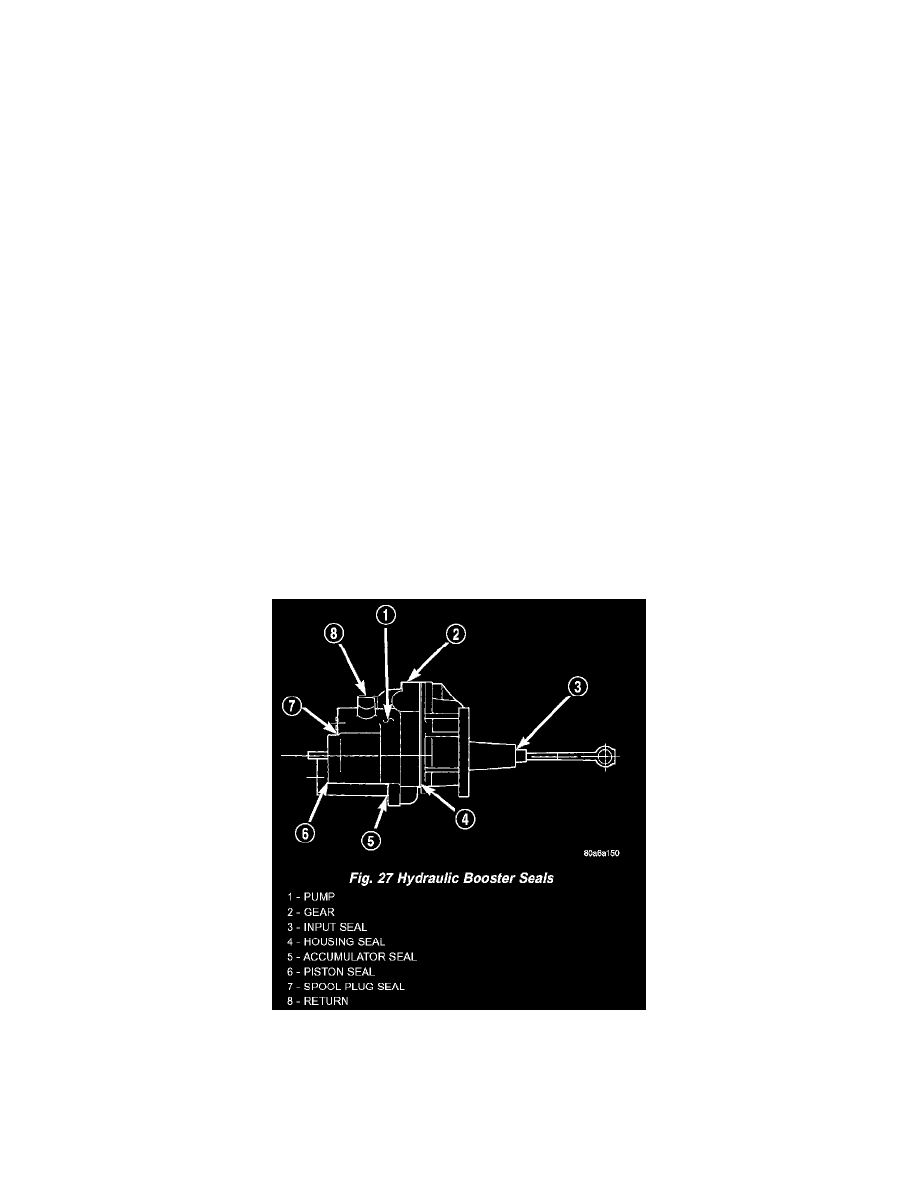RAM 3500 Truck 4WD L6-5.9L DSL Turbo VIN C (2002)

Hydraulic Brake Booster: Testing and Inspection
DIAGNOSIS AND TESTING - HYDRAULIC BOOSTER
The hydraulic booster uses hydraulic pressure from the power steering pump. Before diagnosing a booster problem, first verify the power steering
pump is operating properly. Perform the following checks.
Check the power steering fluid level.
Check the brake fluid level.
Check all power steering hoses and lines for leaks and restrictions.
Check power steering pump pressure.
NOISES
The hydraulic booster unit will produce certain characteristic booster noises. The noises may occur when the brake pedal is used in a manner not
associated with normal braking or driving habits.
HISSING
A hissing noise may be noticed when above normal brake pedal pressure is applied, 40 lbs. or above. The noise will be more noticeable if the vehicle
is not moving. The noise will increase with the brake pedal pressure and an increase of system operating temperature.
CLUNK-CHATTER-CLICKING
A clunk-chatter-clicking may be noticed when the brake pedal is released quickly, after above normal brake pedal pressure is applied 50 - 100 lbs.
BOOSTER FUNCTION TEST
With the engine off depress the brake pedal several times to discharge the accumulator. Then depress the brake pedal using 40 lbs. of force and start
the engine. The brake pedal should fall and then push back against your foot. This indicates the booster is operating properly.
ACCUMULATOR LEAKDOWN
1. Start the engine, apply the brakes and turn the steering wheel from lock to lock. This will ensure the accumulator is charged. Turn off the engine
and let the vehicle sit for one hour. After one hour there should be at least two power assisted brake application with the engine off. If the system
does not retain a charge the booster must be replaced.
2. With the engine off depress the brake pedal several times to discharge the accumulator. Grasp the accumulator and see if it wobbles or turns. If it
does the accumulator has lost a gas charge and the booster must be replaced.
SEAL LEAKAGE
If the booster leaks from any of the seals the booster assembly must be replaced.
INPUT ROD SEAL: Fluid leakage from rear end of the booster.
PISTON SEAL: Fluid leakage from vent at front of booster.
HOUSING SEAL: Fluid leakage between housing and housing cover.
SPOOL VALVE SEAL: Fluid leakage near spool plug.
RETURN PORT FITTING SEAL: Fluid leakage from port fitting.
